 题目内容
(请给出正确答案)
题目内容
(请给出正确答案)
The signal s(t) shown in figure is transmitted through an AWGN channel with noise PSD N0/2. Suppose a filter with impulse response h(t) is used at the receiver, the filter output should be: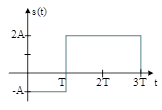

A、
B、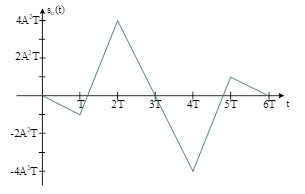
C、
D、
 题目内容
(请给出正确答案)
题目内容
(请给出正确答案)
 更多“For AWGN channel, 16-PSK requi…”相关的问题
更多“For AWGN channel, 16-PSK requi…”相关的问题
The signal s(t) shown in figure is transmitted through an AWGN channel with noise PSD N0/2. Suppose a filter with impulse response h(t) is used at the receiver, the filter output should be:

A、
B、
C、
D、
The signal s(t) shown in figure is transmitted through an AWGN channel with noise PSD N0/2. Suppose a matched filter with impulse response h(t) is used at the receiver, the matched filter output should be: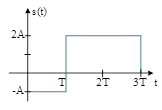
A、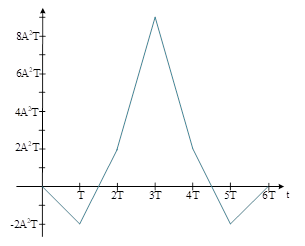
B、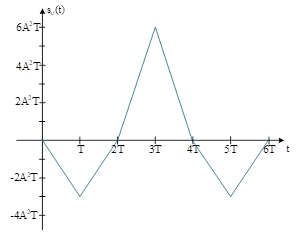
C、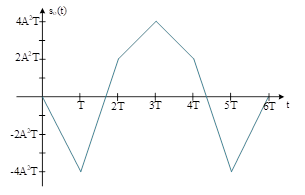
D、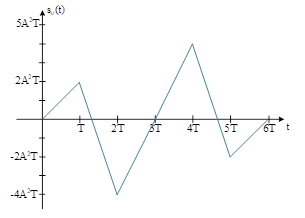
In a frequency selective fading channel, the received signal can be expressed by , where x(t) and n(t) denote the transmit signal and AWGN, and
, where x(t) and n(t) denote the transmit signal and AWGN, and denotes the fading coefficient.
denotes the fading coefficient.
The signal s(t) shown in figure is transmitted through an AWGN channel with noise PSD N0/2. Suppose a matched filter with impulse response h(t) is used at the receiver (coefficient K=1), the peak pulse signal-to-noise ratio is: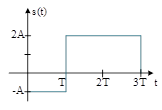
A、18/N0
B、12/N0
C、8/N0
D、4/N0
In a flat fading channel, the received signal is writen as where x(t) and n(t) denote the transmit signal and the AWGN, respectively, and
where x(t) and n(t) denote the transmit signal and the AWGN, respectively, and is the fading coefficient. Assume that the receiver has got the ideal channel estimate denoted by
is the fading coefficient. Assume that the receiver has got the ideal channel estimate denoted by also. a) Design a linear equalizer. b) Write the output of the equalizer.
also. a) Design a linear equalizer. b) Write the output of the equalizer.
A.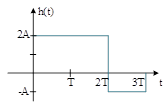
B.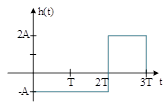
C.
D.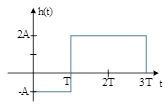
A、QPSK can achieve the same bit error rate as BPSK.
B、QPSK can achieve the same symbol error rate as BPSK.
C、the bandwidth efficiency of QPSK is the same as that of BPSK.
D、the bandwidth efficiency of QPSK is twice that of BPSK.
A、The ML decision rule is to choose the message point closest to the received signal point.
B、The ML decision rule always equals to the MAP rule.
C、The MAP and ML decision rules can be conditionally equivalent.
D、The ML decision rule can minimize the probability of error.
Write MATLAB-based codes to implement a 16QAM system. The channel is ideal AWGN channel. The modulation and demodulation should be implemented. The SNR defined as is assumed to change from 0 dB to 10 dB with step 2 dB. The BER-versus SNR curve based on statistics should be drawn, and should be compared with that by using the theoretical formula.
is assumed to change from 0 dB to 10 dB with step 2 dB. The BER-versus SNR curve based on statistics should be drawn, and should be compared with that by using the theoretical formula.
A、number_Frame=200; N_bits=400; Max_SNR=10; step=2; errs=zeros(1, fix(Max_SNR/step)+1); %___________________________________________________ for nframe=1:number_Frame nframe s_bits = round(rand(1, N_bits)); % info. bits Eav=1; d=sqrt(Eav./10); sig=qam16mapping(s_bits,d); A_WGN=randn(1,N_bits/4)+j.*randn(1,N_bits/4); %___________________________________________ nEN=0; for EbN0db= 0:step:Max_SNR snr=10.^(EbN0db/10); nEN=nEN+1; Eb_av=Eav/4; sigma =sqrt(Eb_av /(2*snr)); r = sig+sigma*A_WGN; de_bits=(hard_demap(r,d)+1)./2; err(1,nEN) = length(find(de_bits~=s_bits)); end % EbN0db %__________________________________________________ errs = errs + err; end %nframe ber= errs/number_Frame/N_bits; %________________________________________________________ snr_db=[0:step:Max_SNR]; snr=10.^(snr_db./10); M=16; xqam16=sqrt(3.*log2(M)./(M-1).*snr); SER_T=4.*(1-1./sqrt(M)).*Qfunct(xqam16); BER_T=SER_T./log2(M); %________________________________________________________ i=0:step:Max_SNR; figure semilogy(i,ber,’r-’,i,BER_T,’:*’); xlabel(’E_{b}/N_{0}’) ylabel(’BER’) legend(’Monte Claro’,’Theoretical result’); grid on function sig=qam16mapping(msg, d) N_bit=length(msg); mapping =[ d, d; d, 3*d; 3*d, d; 3*d, 3*d;... d, -d; d, -3*d; 3*d, -d; 3*d, -3*d;... -d, d; -d, 3*d; -3*d, d; -3*d, 3*d;... -d, -d; -d, -3*d; -3*d, -d; -3*d, -3*d]; %matrix 16 X 2 %--------------------------------------------------------------------- %qam modulation dsource=[]; sig=[]; for i=1:4:N_bit temp=[msg(i),msg(i+1),msg(i+2),msg(i+3)]; s_index = int_state(temp ); dsource=[dsource,s_index+1]; end %dsouce element in{1,...,16} N_QAM=length(dsource); %(N_bit/4) for i=1:N_QAM sig1=mapping(dsource(i),1); sig2=mapping(dsource(i),2); sig=[sig,sig1+j.*sig2]; % symbol row vector with N_bit/4 16QAM symbols end function hardbits=hard_demap(r,d) N_symbol=length(r); hardbits=[]; sbits=zeros(1,4); for k=1:N_symbol sk=r(k); sbits(1)=-real(sk); sbits(2)=-imag(sk); sbits(3)=abs(real(sk))-2.*d; sbits(4)=abs(imag(sk))-2.*d; hardbits=[hardbits,sign(sbits)]; end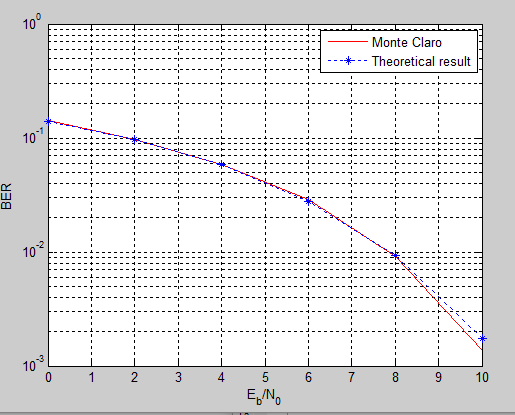
B、错
C、错
D、错


为了保护您的账号安全,请在“简答题”公众号进行验证,点击“官网服务”-“账号验证”后输入验证码“”完成验证,验证成功后方可继续查看答案!

 微信搜一搜
微信搜一搜
 简答题
简答题



 微信搜一搜
微信搜一搜
 简答题
简答题